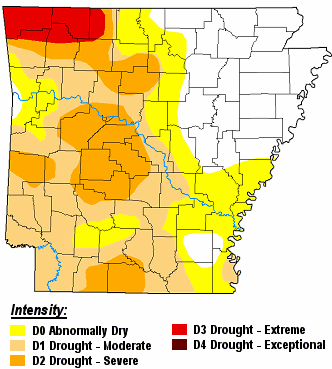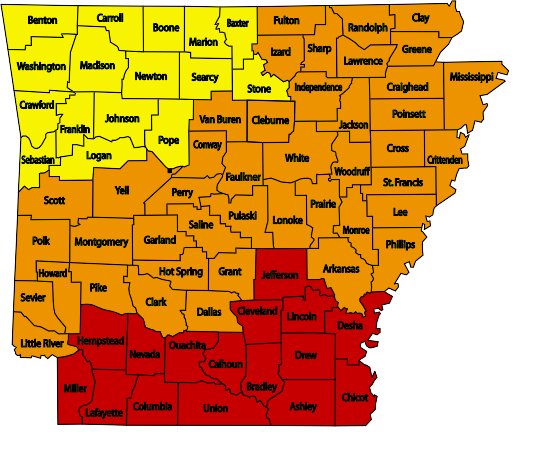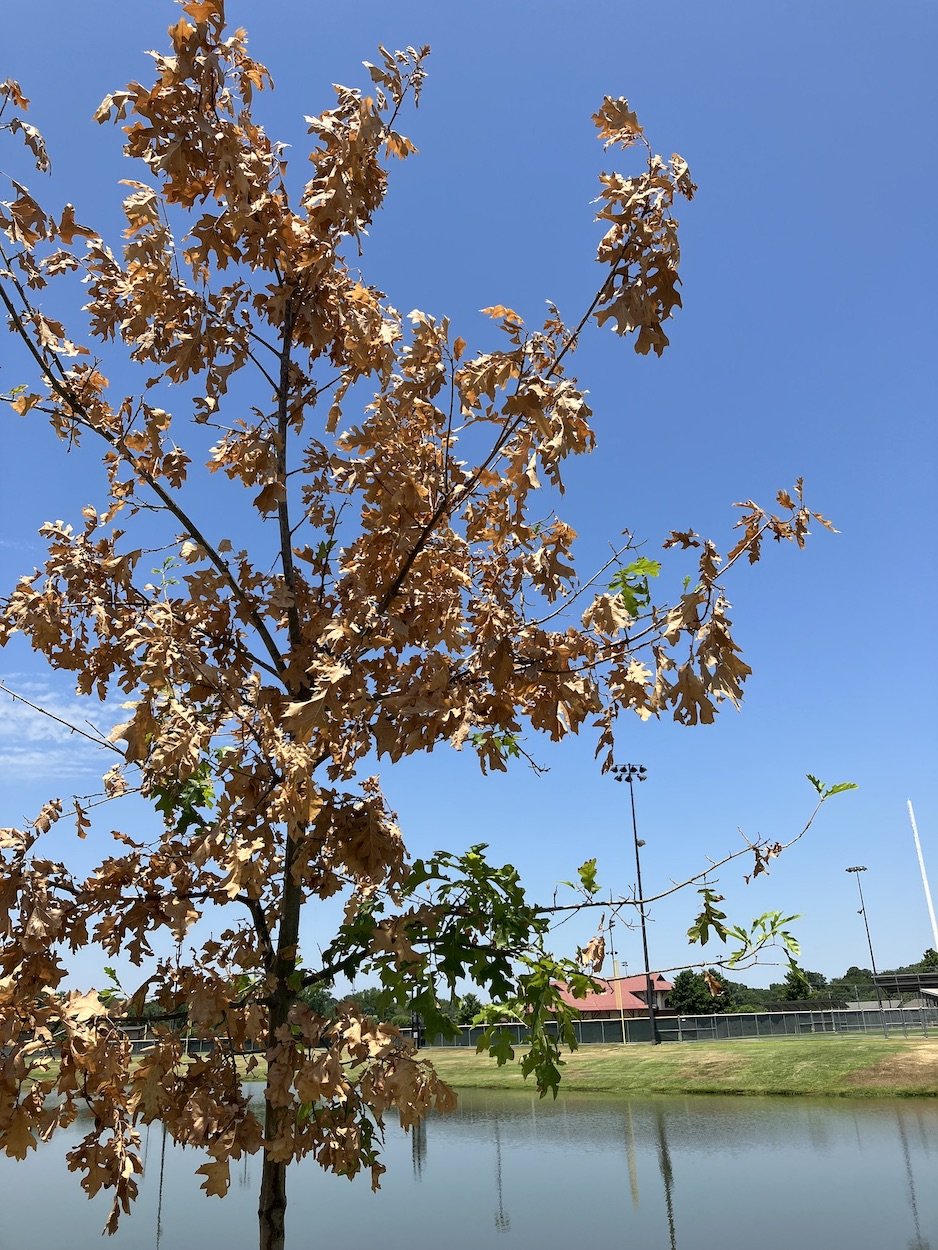Across the country, the worst drought conditions (at least D3) were in the Rockies, Plains, mid-South (including Arkansas), Ohio Valley, and the central Appalachians.
A moderate to extreme drought (D1 to D3) was ongoing in southern, central, and western Arkansas in mid-October. (NSW - Little Rock)
Here at home in October (through the 14th), other than a few sprinkles in places, it was bone dry across the region. Cold fronts were preceded by well above average temperatures, and passed through with nothing more than a wind shift (and maybe a few clouds) followed by very low afternoon humidity levels (less than 20 percent at times). By the 18th, burn bans were posted in 55 (of 75) counties, and many of these counties had a high wildfire danger (according to the Arkansas Forestry Division). Agricultural disasters were declared in Nevada, Perry, and Yell Counties.
This dry scenario was nothing new. From the beginning of September through the two weeks of October, three to more than six inch rainfall deficits were common in portions of southern, central, and western Arkansas.
In 2024 (through October 14th), wet to very wet conditions were found across the central and southern counties, and it was not-so-wet in the northwest. Precipitation was more than six inches above average at El Dorado (Union County) and Little Rock (Pulaski County), and over six inches subpar at Fayetteville (Washington County) and Harrison (Boone County).









